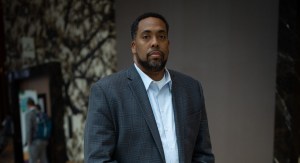Now at the heart of government, CIOs know success is a matter of perspective

In February, Bo Reese found himself in a situation painfully familiar to state technology leaders everywhere. The Oklahoma chief information officer was testifying in a hearing about another agency’s financial problems when the line of questioning turned to him.
Republican state Rep. Bobby Cleveland grilled Reese on rumors that his agency — the Information Services Division of the Office of Management and Enterprise Services — didn’t listen to its customers.
“Agencies say that your agency offers no plan — that you come in there and just start doing things and you tell them what to do and you send them a bill. Is that factual?” Cleveland asked.
“Nope. Not at all,” Reese said. “We have lots of…”
“So, all the agencies are out of line but you?” Cleveland said.
“Well, how many agencies are telling you that?” Reese said.
“I would say probably at least 20,” Cleveland said. “Well, no. I’ll back out of it. Probably 10.”
“I have 111 that I work with,” Reese said.
Cleveland seemed unimpressed by this answer, and admitted that while he hadn’t spoken with all 111 agencies, he had spoken with “enough” to get a full picture of what was happening. He continued his interrogation, returning repeatedly to the question of why agencies were criticizing the levels of attention and service from Reese’s office.
Reese explained that his team always tries to make itself available and that it regularly publishes planning documents. And while those claims appear to be true, the unmentioned backdrop is that centralized IT service organizations like Oklahoma’s will always leave someone feeling ignored.
It’s a story that government CIOs have told over and over again. IT people are only noticed when something goes wrong. They’re the ones everyone relies on, and then resents when service isn’t immediate. Being a leader in the national CIO community or having earned the respect of one’s peers doesn’t mean much at home, where people just want to know why their ancient mainframe isn’t working properly.
As South Dakota Chief Security Officer Jim Edman puts it: “Every agency thinks their priorities are number one and what they’re waiting for is the most important. Well, not everybody can be number one. Sometimes you have to wait in line.”
Consolidated, for better or worse
It’s a more prevalent issue than it once was. Government technology offices used to be simple fix-it shops. They repaired computers when they broke and helped people with lost passwords. They still do things like that, but technology’s creeping tendrils of influence over every aspect of work and life have positioned the IT shop square in the center of government.
Most CIOs now operate consolidated or centralized organizations where there used to be dozens of smaller, agency-specific IT teams spread out across state government. These organizations can buy new technology at scale and manage services that are more or less the same across many departments, like email. The cost savings and operational efficiencies are often massive.
Centralized IT turns the technology office into a gatekeeper of essential tools, and with that dependence comes the potential to disappoint. Technology offices have limited staff and limited budgets to handle requests, just like every other government agency.
Combine those factors with a general lack of technology knowledge among many government administrators — not to mention the persistence of computer systems that are often decades old — and the results can be chaotic. Misunderstandings, frustrations, finger-pointing and formal investigations and firings commonly arise.
Framed this way, it sounds like IT consolidation is the problem — perhaps more trouble than it’s worth. But most CIOs agree that while imperfect, a consolidated IT organization is the best thing going.
In fact, Oklahoma’s IT consolidation, the one led by Reese, has been widely praised. The National Association of State Chief Information Officers (NASCIO) calls it one of the most impressive seen anywhere, for both its breadth and impact.
Consolidation projects are happening all across government and vary from place to place — some organizations consolidate employees, others just take on data centers, some lump contracts together. Oklahoma did it all. And by the office’s accounting, it has drastically improved Oklahoma state government’s IT security and saved the state more than $372 million in annual spending.
Seventy-seven agencies were involved in the project following a 2011 legal mandate, and 30 others voluntarily joined when they saw the buying power and efficiency they stood to gain. About 1,500 employees became 713. Reese says contract renegotiations alone saved the state $169 million annually. These were all business decisions that are commonplace in the private sector, but can — and often do — slide by unnoticed for years in government.
“The fact that Bo has achieved such a significant amount of cost savings and avoidance — that’s a good thing,” said Yejin Jang, NASCIO’s director of government affairs. “I challenge anybody to find somebody who’s not happy their state has saved and avoided $372 million. This is not an insignificant feat.”
But even saving that much money and becoming a national leader isn’t enough to keep a CIO from a tongue-lashing by a lawmaker. Being misunderstood in their own organization is a burden that, to some extent, all senior technology officials must carry.
“Our legislators in Oklahoma probably know less about what we’ve achieved around our IT consolidation than other states and certainly my federal partners, because our federal partners are very interested in what we’re doing,” Reese said.
‘Your agency offers no plan’
Of Oklahoma IT’s 111 customers, it only takes a handful to complain before the CIO is brought in to testify, Reese told StateScoop.
When he appeared before lawmakers in February, it was as the state’s health department was facing serious problems with its finances and overall management. Former Health Department Chief Operating Officer Deborah Nichols testified in December that the agency was “a financial time bomb” and, indeed, a $30 million budget shortfall was subsequently uncovered.
Amid volleys from Nichols aimed at top administrators, and justifications offered by former Health Department Interim Director Preston Doerflinger (who resigned in February following allegations of domestic violence against his wife in 2012), Reese’s office soon found itself among those being criticized.
Nichols complained to Cleveland and the House Special Investigative Committee that her agency hadn’t been included in the process of vetting large IT purchases for department and that the work of the state’s technology office had led to something on the order of a tenfold increase in her department’s technology spending. In a later hearing, Reese accounted for the former complaint by pointing out that the health department has a standing committee for such projects.
And as for the cost increase, OMES’s most recent quarterly report shows that it saved the health department approximately $2.3 million through consolidation projects.
The health department’s IT costs had in fact risen when compared with previous years, but it wasn’t because the state’s technology was less efficient than before — it was because the health department had started several new projects like a case management system and an interoperable public health information system. So, of course costs went up, Reese said — the agency was doing more.
Part of Oklahoma’s consolidation effort has involved untangling hidden costs that were embedded in other budget items. Some purchases, like phones, were sometimes miscategorized as administrative costs, and in a few rare instances, agencies had underinvested in IT, which meant they needed to spend more to meet new statewide cybersecurity standards linked to the consolidation.
In some instances, agencies were paying a vendor for a service, and they had assumed that was their total cost, Reese said, but they weren’t counting maintenance fees or employee salaries.
“A lot of agencies don’t get that math,” Reese said. “They just continually say, ‘I think it was less than that.’ Nope. You weren’t counting your people. Everyone thought people were free.”
‘Misunderstood and beat up’
Many technologists, like former Washington State Chief Information Officer Michael Cockrill, seem to accept their lot with stoic resolve. But the atmosphere is becoming more forgiving. CIOs tell StateScoop that technology is much better understood by the average person than it was 10 years ago. Cockrill calls it “a skill in transition.”
He ended a five-year run as state CIO in October to take a chief technology officer role with a medical research institute. Cockrill’s departure coincided with an audit of his agency, Washington Technology Solutions, during the course of which he also found himself defending his office and its processes before the legislature — but he said he was always ready to accept the baggage that came with the role.
“I liked the technology. I even liked the politics. I thought it was a fabulously interesting job,” Cockrill said. “Coming to work in private industry has made me appreciate it even more.”
As in Oklahoma, Washington’s centralized technology office serves about 100 state agencies. The complaints in Washington were also similar to those in Oklahoma. Some agencies didn’t think the technology office was giving them enough attention, and that it was dictating solutions instead of listening. But when resources are as constrained as they are in government, it’s always going to happen that way, Cockrill said.
“It’s structurally organized to have IT be disproportionately powerful, because you support everybody and you’re part of every organization in a way that no other agency is, except budget,” Cockrill said. “Being misunderstood and beat up is a central part of the role of IT. And if you go in thinking that’s not going to happen, you’re just going to be frustrated.”
The answer to the question of how to make everyone happy, Cockrill says, is to accept that you can’t, and to be transparent about why, because while many agency heads may not understand technology, they will understand what it means to be short on resources.
“You have to find balance and you have to know in finding balance that all of your customers are going to be frustrated that you’re not focused on them. Because governing is a zero-sum game,” Cockrill said. “They want you to be totally focused on you solving their problem. That’s the nature of customers.”
Cockrill said that while frustrating and confusing may be apt descriptors of this dynamic, the term “problem” does not apply — it’s just how things work.
“They’ve tried a thousand different things, and at the end of the day, most [government organizations] come back to one or two models because they are the ones that are most effective,” Cockrill said. “That you are constrained and have to deal with limited resources, I don’t think that’s a problem. I think that’s the right way to run a government. It doesn’t mean it’s not frustrating sometimes, but just because it’s frustrating doesn’t indicate that something is wrong.”
Getting the point across
IT consolidation is sometimes so undervalued or overlooked that lawmakers want to turn back the clock.
Minnesota’s centralized technology office is today at risk of being dismantled by the legislature in reaction to one of the office’s recent project failures. Republican Sen. Julie Rosen has proposed to dissolve Minnesota IT Services (MNIT) and create a new, non-centralized technology office under the wing of the Department of Administration.
The Minnesota Licensing and Registration System, a $93 million project led by MNIT that launched last year, started showing problems almost immediately, prompting the office to request an additional $43 million to fix it. And while the governor’s office has admitted the project is a serious issue for the state and demands remediation, IT Commissioner Johanna Clyborne says she thinks the Senate would be throwing out the baby with the bathwater if it disbanded her office.
“This shortsighted bill does not take into account the many successful projects that MNIT delivers on behalf of Minnesotans, nor would it help state government overcome the challenges inherent in modernizing decades-old IT systems and the government processes they support,” Clyborne said.
Though decommissioning the centralized IT office was proposed as a way to mitigate financial loss, Clyborne pointed out that it would ultimately be a step backward.
“This bill would stall MNIT’s progress moving state government to modern and cloud-based solutions, which are a fundamental necessity to building a secure, digital government that is responsive to citizen needs,” Clyborne said.
As an administrator of what is thought to be the oldest centralized state IT organization in the country, South Dakota Chief Security Officer Jim Edman told StateScoop he understands where these complaints and misunderstandings come from. South Dakota consolidated in 1996.
But is it worth it?
Edman says it depends on a state’s return on investment. In South Dakota, it’s definitely worth it, he said, and reckoned it’s probably worth it in Washington and Oklahoma, too.
The troubles it brings along are not unique to IT, he said — anyone who provides services faces the same challenge with customers.
“There’s always going to be a bit of a rub there, but there’s not a taxpayer out there who’s willing to fork over more money,” Edman said. “Nobody wants to pay more sales tax, more property tax, higher license fees for those sorts of things, so there has to be a give and take and a negotiation process.”
But sometimes, a CIO just ends up in a committee room, being interrogated by a lawmaker about circumstances and events that don’t have much to do with the IT office, and that by some accounts, aren’t a “problem,” just part of the process. Moments like those are probably one of the reasons why the average tenure of a state CIO is around two and a half years. Reese has already surpassed that mark. But he doesn’t sound like someone who is ready to quit.
“For the most part, agencies are coming together,” Reese said. “They’re starting to say, ‘Hey I have a need. Does anybody else have this need? Can we share the cost?’ To me that’s really exciting when that starts happening on its own. We’re starting to get the point across.”






